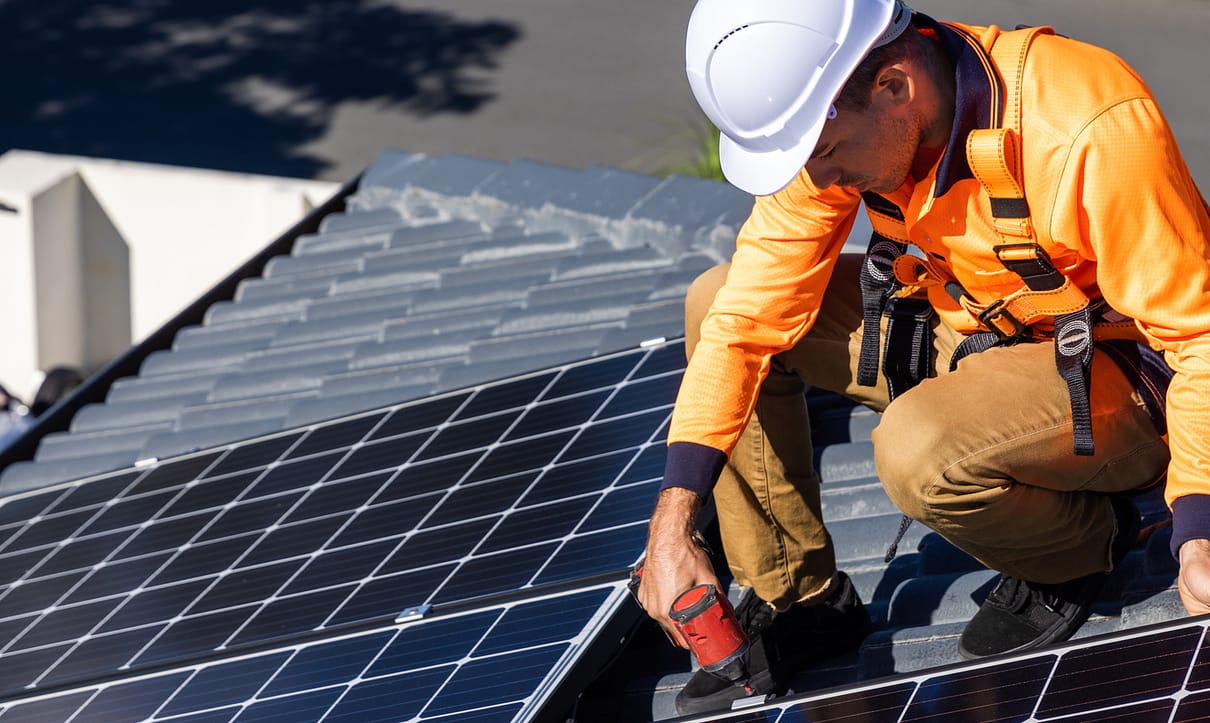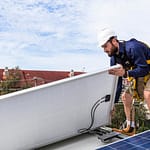What’s Best for Your Roof (and Your Wallet)?
When reinstalling or upgrading a solar panel system, one of the most important decisions is choosing between a rail or rail-less mounting system. While both serve the same basic function—securing your solar panels to the roof—they differ in design, durability, maintenance, and long-term costs.
In this article, we’ll walk you through both systems and explain why, in many cases, a rail system is the smarter and more cost-effective choice.
What Is a Rail Mounting System?
A rail system uses aluminum tracks secured to your roof. These rails support the solar panels and make it easier to align and adjust them during installation.
Advantages of Rail Systems:
- Stronger Structural Support
Rails distribute weight evenly, increasing the stability and lifespan of your solar setup. - Cleaner Alignment
Panels are easier to position and keep straight for a professional, symmetrical look. - Better Fit for Complex Roofs
Works on sloped, uneven, or multi-surface roofs where precise positioning is key. - Simplified Maintenance = Lower Long-Term Costs
If you ever need to repair or replace a panel, you can remove just one without disturbing the others. This saves time and labor—making the rail system more cost-effective over time. - Warranty-Friendly
Many warranties, especially for roof protection and water resistance, require proper mounting with rails and certified parts.
What Is a Rail-Less Mounting System?
Rail-less systems mount panels directly to brackets on the roof. While they use fewer materials and sit lower to the surface, they aren’t ideal in all situations.
Pros of Rail-Less Systems:
• Fewer Materials and Lower Upfront Cost
• Sleek Appearance
Panels sit closer to the roofline.
Drawbacks:
• Harder to Align Panels
• More Difficult Maintenance
Reaching or replacing a single panel often means removing several.
• Limited Flexibility for Complex Roofs
• Potential Warranty Issues
Many systems require specific attachments or upgrades for full warranty coverage.
Why We Recommend Rail Systems for Reinstallation
If you’re reinstalling or upgrading your solar system, a rail system offers greater flexibility, easier maintenance, and better protection for both your panels and your roof. While the upfront cost may be slightly higher due to more materials, the reduced maintenance costs and longer-lasting performance make rails the more cost-effective option in the long run.
Conclusion: Rails Offer More Value Over Time
If you’re investing in solar for the long term, it’s smart to choose a system that’s easier to work with, safer for your roof, and less costly to maintain. That’s why we recommend rails for most projects—especially when it comes to removals, reinstallations, or system upgrades.
Frequently Asked Questions
1. Is a rail system more expensive than a rail-less system?
While rail systems may have a slightly higher upfront material cost, they can actually be more cost-effective in the long run. Their easier maintenance and better compatibility with warranties reduce repair costs and protect your investment over time.
2. Will a rail system damage my roof?
No—when properly installed by certified professionals, a rail system can actually help protect your roof by distributing the panel weight more evenly and providing a waterproof seal at attachment points. Many roof warranties even require a certified rail system.
3. Can I still get a clean look with a rail system?
Yes! Modern rail systems are designed to be low-profile and visually appealing. The alignment precision of rails often results in a cleaner and more professional finish compared to rail-less setups.
4. Why is a rail system better for future maintenance?
With rail systems, each panel is mounted independently on the rails. If you ever need to service one panel, you can remove it without disturbing the rest—saving time, money, and hassle.
5. Are rail-less systems a bad choice?
Not necessarily. Rail-less systems can work well for simple, small-scale installations on uniformly flat roofs. However, for most homeowners—especially those with complex roof shapes or who are reinstalling a system—a rail system offers more benefits and fewer risks.
Click “here” to get an estimate for your solar panel removal.



